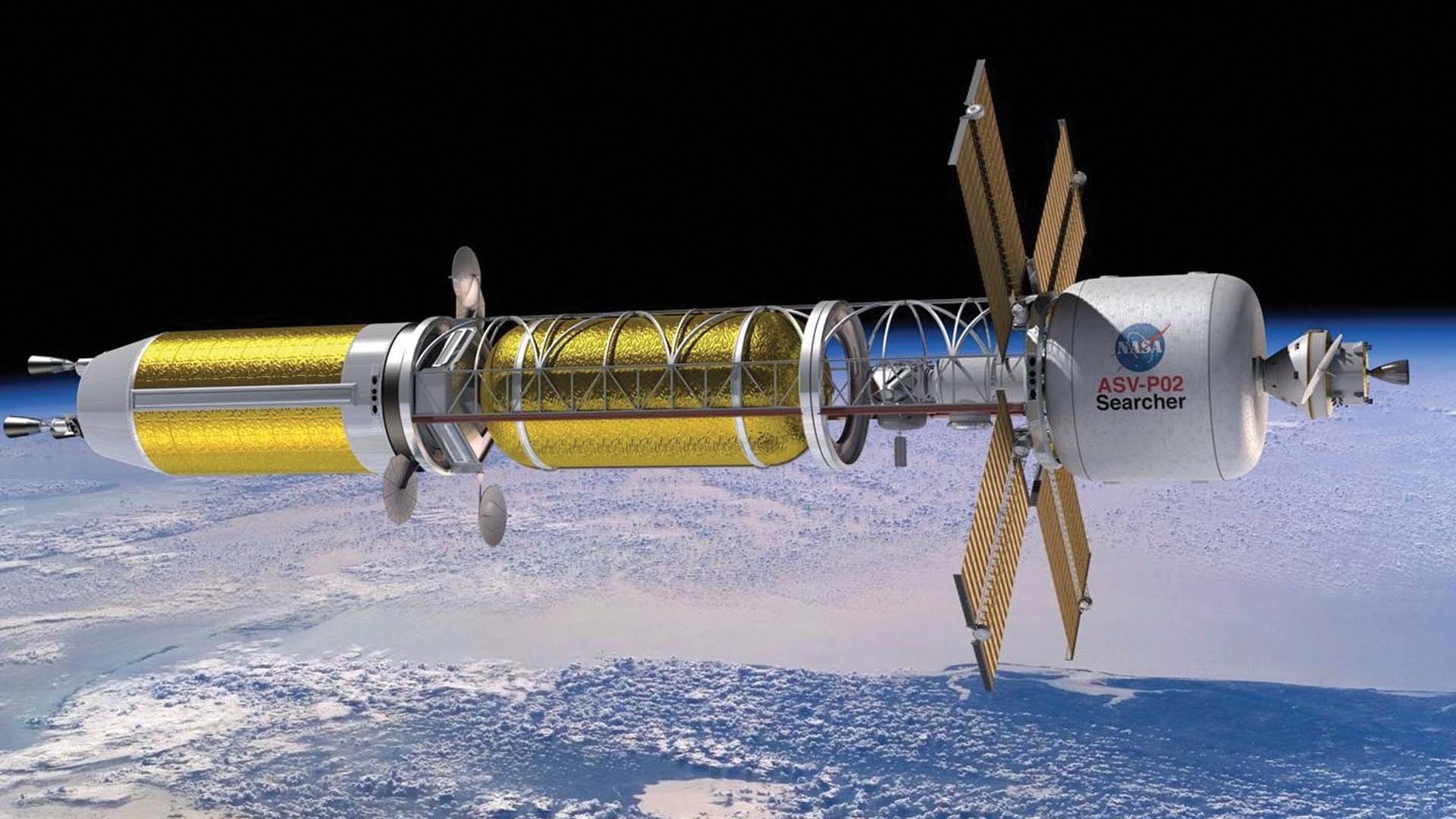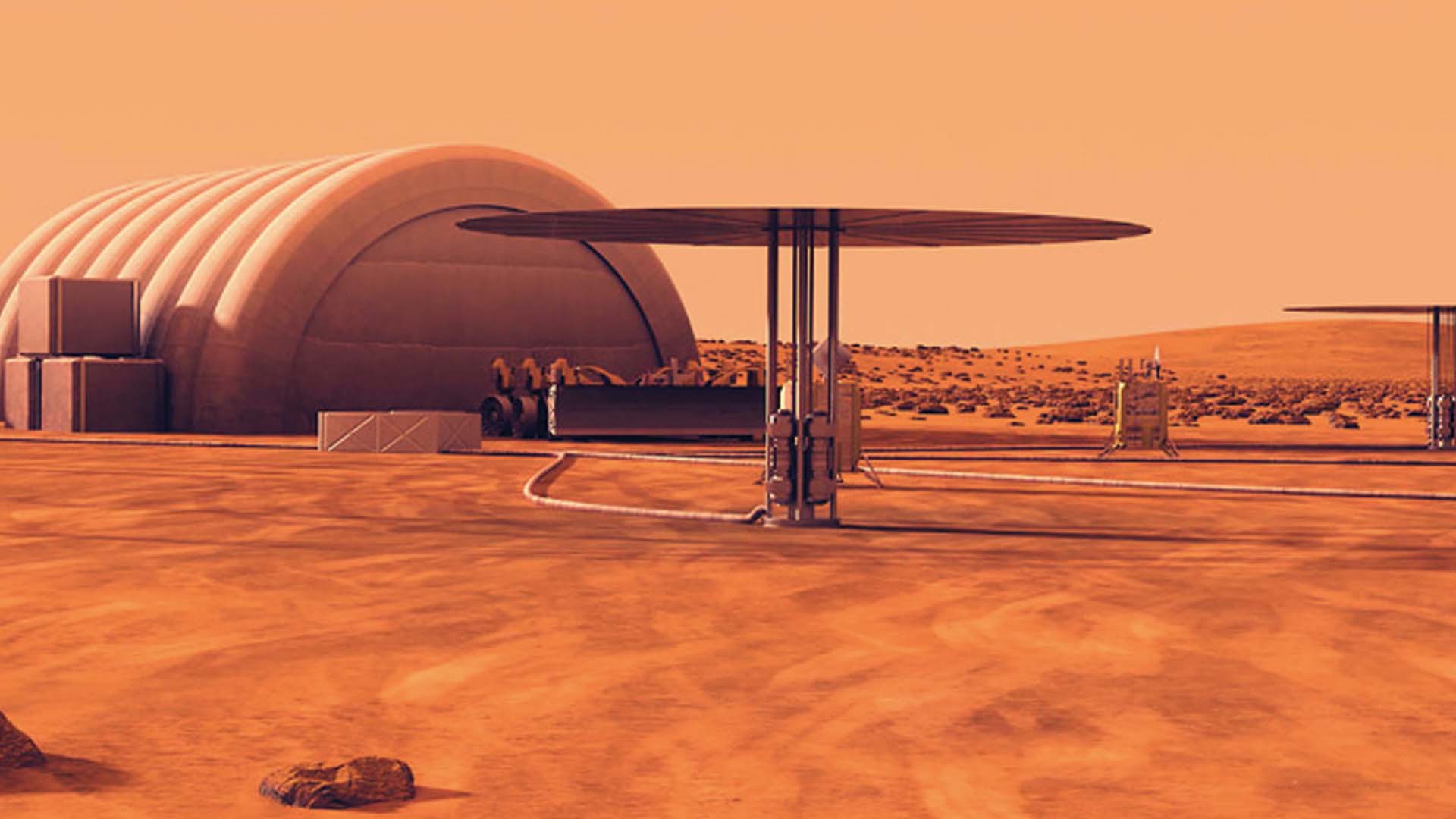NASA’s goal of getting humans safely to the surface of Mars and back again sometime before 2040 has set the stage for one of the greatest engineering feats in history, and nuclear is the best bet for a successful mission.
The monumental trip presents NASA and its partners with a host of challenges, not the least of which is power. The mission will require two special power sources. The first is a propulsion system that overcomes the many limitations of conventional rockets for the 68 million mile round trip. The second power source would generate electricity for a research station on the Martian surface.
A long history of nuclear power in space
NASA has safely used nuclear power in space since the 1960s, mostly in the form of radioisotope thermoelectric generators (RTGs). RTGs convert heat from the radioactive decay of Pu-238 into electricity using specialized thermocouples—devices that make electricity without moving parts that might fail during a long space mission.
RTGs are used whenever lack of sunlight, rugged conditions, or the length of the mission necessitates a robust, long-lived power supply. They have provided power and heat for both of the Voyager spacecrafts, Cassini, Galileo, the Viking landers, Mars Curiosity Rover, Mars Perseverance Rover, New Horizons, and more than two dozen additional satellites, spacecrafts, and vehicles.
A different type of nuclear power
The reactors for a human mission to Mars would be very different from RTGs. Most importantly, instead of producing heat through the radioactive decay of plutonium, these reactors would use uranium to produce heat via fission, similar to how nuclear power reactors operate on Earth.
Why fission? The short answer is because fission technology is relatively lightweight, reliable, and better suited to meet the needs of the mission than the current alternatives—RTGs, solar panels, chemical batteries, and chemical rockets.
For the long answer, it helps to understand the requirements of the Mars mission.

Blasting off from Earth
The journey starts with a more-or-less conventional rocket that will launch astronauts into space. Conventional chemical rockets make sense for escaping the Earth’s atmosphere because they produce a lot of thrust—yet they also require a lot of heavy fuel and aren’t very efficient.
Once in space, a nuclear propulsion system would take over.
There are two main types of nuclear space propulsion: thermal and electric. Nuclear thermal uses the heat created during fission to expand and accelerate liquid hydrogen fuel through the reactor core and out of the thruster nozzle of a rocket.
Nuclear electric uses the fission reactor to create electricity that is used to shoot ions of xenon or krypton out of the thruster nozzle.
NASA is currently pursuing nuclear thermal propulsion, but both of these types of engines have a much higher specific impulse—a measure of how efficiently a rocket creates thrust—than chemical rockets. A rocket using nuclear thermal propulsion, for example, might have a specific impulse of about 900 seconds, compared with about 450 seconds for a chemical rocket.
That gives a nuclear space engine two big advantages: First, it reduces the estimated time for a human to get to Mars by at least 25%, thereby limiting the crew’s exposure to cosmic radiation.
Perhaps more importantly, nuclear fuel is energy-dense. The amount of uranium necessary to get a spacecraft to Mars and back again would be orders of magnitude smaller than the fuel needed for a chemical rocket. That leaves more room for equipment as well as food, water, and other necessities.
Progress underway
In 2021, the Department of Energy awarded grants to develop three different reactor design concepts for nuclear thermal propulsion. Further, the Department of Defense is currently developing a thermal nuclear rocket called Demonstration Rocket for Agile Cislunar Operations (DRACO) that might serve as a prototype for a Mars propulsion system.
The Department of Energy is also working with NASA to develop and test new fuels that require less uranium enrichment and that can withstand the heat and pressure of nuclear thermal propulsion systems. Idaho National Laboratory is helping develop and test these fuels at the Transient Reactor Test (TREAT) facility near Idaho Falls.

Photo Credit: NASA
Nuclear power for a research station on Mars
Once the astronauts get to Mars, they would take a separate vehicle through the Martian atmosphere to the surface where they would set up the research station.
A power source for the research station would need to produce enough electricity for the station itself, surface vehicles, experiments, and other needs. Further, that power source would need to produce electricity for a system that produces rocket fuel (liquid oxygen and propellant) to get the astronauts back into orbit around the Red Planet in preparation for the trip home. Current estimates put the surface mission’s power requirements at about 40kW.
The Kilopower nuclear reactor, designed by researchers at Los Alamos National Laboratory and NASA, is one design that might meet the power requirements of the Mars research station. Four of these simple, 10kW nuclear reactors would be stationed outside the habitat.
Find out more about the future of nuclear energy HERE, or stream Tomorrow’s World Today’s four-part exploration of nuclear energy on Science Channel GO and Discovery GO!







